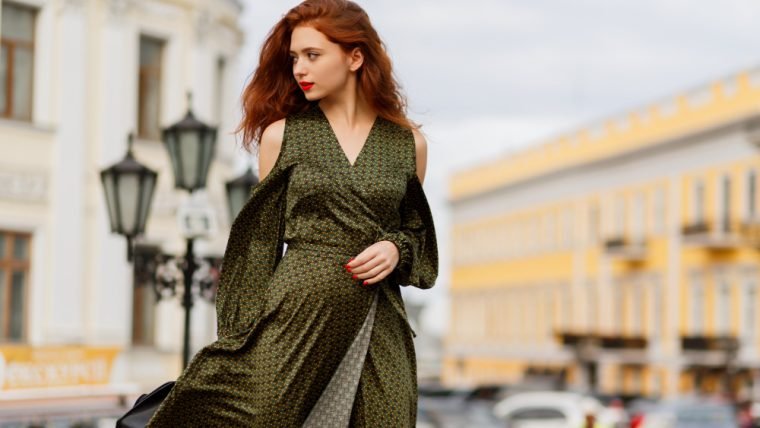Fashion has always been a reflection of the times, with trends coming and going as quickly as the seasons change. However, in recent years, there has been a growing movement towards sustainable fashion, which seeks to create clothing that is both timeless and environmentally friendly. This intersection of timelessness and sustainability is crucial in today’s world, where the fashion industry is one of the largest contributors to pollution and waste.
Sustainable fashion is not just a passing trend; it is a necessary response to the environmental and social challenges we face. The fashion industry is notorious for its negative impact on the planet, from the excessive use of natural resources to the pollution caused by textile production and waste. By embracing sustainable fashion, we can reduce our carbon footprint, conserve resources, and promote ethical practices in the industry.
Sustainable Fashion: What It Is and Why It Matters
Sustainable fashion can be defined as clothing, accessories, and footwear that are produced in an environmentally and socially responsible manner. This means taking into account the entire lifecycle of a garment, from the sourcing of materials to its disposal. Sustainable fashion brands prioritize using organic or recycled materials, reducing waste and pollution, and ensuring fair labor practices.
The importance of sustainable fashion cannot be overstated. The fashion industry is one of the largest contributors to pollution, with textile production alone accounting for 20% of global water pollution. Additionally, the fast fashion model, characterized by cheaply made garments that are quickly discarded, leads to massive amounts of textile waste that end up in landfills or incinerators.
Fortunately, there are many sustainable fashion brands leading the way towards a more responsible industry. Brands like Patagonia, Eileen Fisher, and Stella McCartney have made sustainability a core part of their business models. These brands prioritize using organic or recycled materials, reducing waste through innovative design techniques, and ensuring fair labor practices throughout their supply chains.
Eco-Fashion: A Closer Look at Environmentally Conscious Clothing
Eco-fashion is a subset of sustainable fashion that focuses specifically on the environmental impact of clothing. It involves using materials and production methods that minimize harm to the planet. Eco-fashion brands prioritize using organic or recycled materials, reducing water and energy consumption, and minimizing waste.
One of the key aspects of eco-fashion is the use of sustainable materials. Organic cotton, for example, is grown without the use of harmful pesticides and fertilizers, making it better for the environment and the health of farmers. Recycled polyester, made from post-consumer plastic bottles, reduces the need for virgin materials and helps divert waste from landfills.
In addition to using sustainable materials, eco-fashion brands also prioritize reducing water and energy consumption in their production processes. This can be achieved through innovative technologies that minimize water usage during dyeing and finishing processes, as well as by using renewable energy sources to power factories.
The benefits of eco-fashion for the environment are significant. By using sustainable materials and reducing water and energy consumption, eco-fashion brands help conserve natural resources and reduce pollution. Additionally, by promoting ethical labor practices, they ensure that workers are treated fairly and have safe working conditions.
Trending Fashion: The Importance of Balancing Style and Sustainability
While sustainability is crucial, it is equally important for sustainable fashion to be stylish and appealing to consumers. In order to make a real impact on the industry, sustainable fashion needs to compete with fast fashion brands in terms of style and affordability.
Fast fashion, characterized by its low prices and quick turnover of trends, has had a devastating impact on the environment. The constant demand for new styles has led to overproduction, excessive waste, and exploitation of workers in low-wage countries. In order to combat this, sustainable fashion needs to offer consumers stylish alternatives that are both affordable and ethically produced.
Fortunately, there are many sustainable fashion brands that are successfully striking a balance between style and sustainability. These brands focus on creating timeless pieces that can be worn season after season, rather than following fleeting trends. They also prioritize using high-quality materials and craftsmanship to ensure that their garments last longer and can be passed down through generations.
Some examples of sustainable fashion trends include capsule wardrobes, which encourage consumers to invest in a few high-quality pieces that can be mixed and matched to create a variety of outfits. Another trend is upcycling, which involves transforming old or discarded garments into new, fashionable pieces. These trends not only promote sustainability but also encourage consumers to be more mindful of their consumption habits.
The Timelessness of Classic Fashion: A Sustainable Approach to Wardrobe Building
One of the key principles of sustainable fashion is the idea of investing in timeless pieces that can be worn for years to come. This approach not only reduces waste but also saves money in the long run. By building a wardrobe with classic, versatile pieces, consumers can create a sustainable and stylish collection that transcends trends.
Investing in classic, timeless pieces has many benefits. Firstly, these pieces are designed to withstand the test of time both in terms of style and quality. They are made with high-quality materials and craftsmanship, ensuring that they will last for years without losing their shape or color.
Secondly, timeless pieces are versatile and can be worn in a variety of ways. They can be dressed up or down, mixed and matched with other items in your wardrobe, and worn for different occasions. This versatility reduces the need for excessive consumption and allows you to get more wear out of each garment.
Examples of timeless fashion pieces include a well-tailored blazer, a little black dress, a white button-down shirt, and a pair of high-quality jeans. These pieces can be worn season after season and can be easily accessorized to create different looks. By investing in these timeless pieces, you can build a sustainable wardrobe that will stand the test of time.
The Role of Technology in Sustainable Fashion

Technology plays a crucial role in advancing sustainable fashion. From innovative materials to production techniques, technology is helping to create more environmentally friendly and socially responsible clothing.
One area where technology is making a significant impact is in the development of sustainable materials. For example, companies like Bolt Threads are using biotechnology to create spider silk, a strong and sustainable alternative to traditional silk. Other companies are using innovative techniques to transform waste materials, such as pineapple leaves or orange peels, into durable and eco-friendly fabrics.
In addition to materials, technology is also being used to improve production processes and reduce waste. For example, 3D printing allows for precise and efficient manufacturing, reducing the need for excess materials and minimizing waste. Digital design tools and virtual prototyping also help streamline the design process, reducing the time and resources required to bring a garment to market.
The future of sustainable fashion technology looks promising. Researchers are exploring new ways to create sustainable materials, such as lab-grown leather and plant-based dyes. They are also developing new technologies to improve recycling and reduce the environmental impact of textile production.
Slow Fashion: Embracing Quality, Durability, and Ethical Production
Slow fashion is a movement that encourages consumers to embrace quality, durability, and ethical production in their clothing choices. It is a response to the fast fashion model, which prioritizes cheaply made garments that are quickly discarded.
The slow fashion movement promotes a more mindful approach to fashion consumption. It encourages consumers to invest in high-quality pieces that are made to last, rather than constantly buying new items. It also emphasizes the importance of ethical production practices, such as fair wages and safe working conditions for garment workers.
One of the key benefits of slow fashion is its positive impact on the environment. By investing in high-quality pieces that are made to last, consumers can reduce their overall consumption and minimize waste. Slow fashion also promotes the use of sustainable materials and production methods, further reducing the environmental impact of the fashion industry.
There are many slow fashion brands that are leading the way towards a more sustainable and ethical industry. These brands prioritize quality over quantity, offering timeless pieces that are made to last. They also ensure fair labor practices throughout their supply chains, from the sourcing of materials to the production of garments.
Circular Fashion: A Sustainable Solution to the Problem of Textile Waste
Circular fashion is an approach to clothing production and consumption that aims to minimize waste and maximize the lifespan of garments. It involves designing products with recyclability in mind, using recycled or upcycled materials, and implementing take-back programs to ensure that garments are properly disposed of at the end of their life.
The fashion industry is notorious for its massive amounts of textile waste. According to the Ellen MacArthur Foundation, over $500 billion worth of value is lost every year due to clothing that is barely worn and rarely recycled. This waste not only contributes to pollution and resource depletion but also represents a missed opportunity for economic value.
Circular fashion offers a solution to this problem by closing the loop on textile production and consumption. By designing products with recyclability in mind, brands can ensure that garments can be easily disassembled and recycled at the end of their life. They can also use recycled or upcycled materials, reducing the need for virgin resources.
In addition to designing for recyclability, circular fashion also promotes take-back programs, where consumers can return their old garments to be properly disposed of or recycled. This ensures that garments do not end up in landfills or incinerators and can be given a second life.
The Power of Collaboration: How Sustainable Fashion Brands are Joining Forces
Collaboration is a powerful tool in the sustainable fashion movement. By joining forces, sustainable fashion brands can amplify their impact, share resources and knowledge, and create innovative solutions to the challenges they face.
There are many examples of sustainable fashion brands collaborating to create positive change. For example, the Fashion Revolution movement brings together brands, designers, and consumers to raise awareness about the social and environmental impact of the fashion industry. The movement encourages consumers to ask brands “Who made my clothes?” and promotes transparency and accountability in the industry.
Collaboration also extends to the supply chain level, where brands work together with suppliers and manufacturers to improve sustainability practices. By sharing best practices and resources, brands can help each other reduce waste, conserve resources, and promote ethical labor practices.
The future of collaboration in sustainable fashion looks promising. As more brands recognize the importance of sustainability, they are likely to seek out partnerships and collaborations to further their impact. By working together, sustainable fashion brands can create a more sustainable and ethical industry.
Embracing Timeless Fashion and Modern Sustainability for a Better Future
In conclusion, the intersection of timelessness and sustainability in fashion is crucial in today’s world. Sustainable fashion offers a way to reduce our environmental footprint, conserve resources, and promote ethical practices in the industry. By embracing timeless pieces, investing in quality garments, and supporting sustainable fashion brands, we can create a more sustainable and stylish future.
It is important to strike a balance between style and sustainability. While it is crucial for sustainable fashion to be appealing to consumers, it should not come at the expense of the environment or workers’ rights. By supporting brands that prioritize sustainability and ethical production practices, we can send a message to the industry that we value both style and sustainability.
Embracing timeless fashion and modern sustainability is not just a personal choice; it is a collective responsibility. By making conscious choices about what we wear and how we consume, we can contribute to a better future for ourselves and future generations. Let us embrace the intersection of timelessness and sustainability in fashion and create a more sustainable and stylish world.




